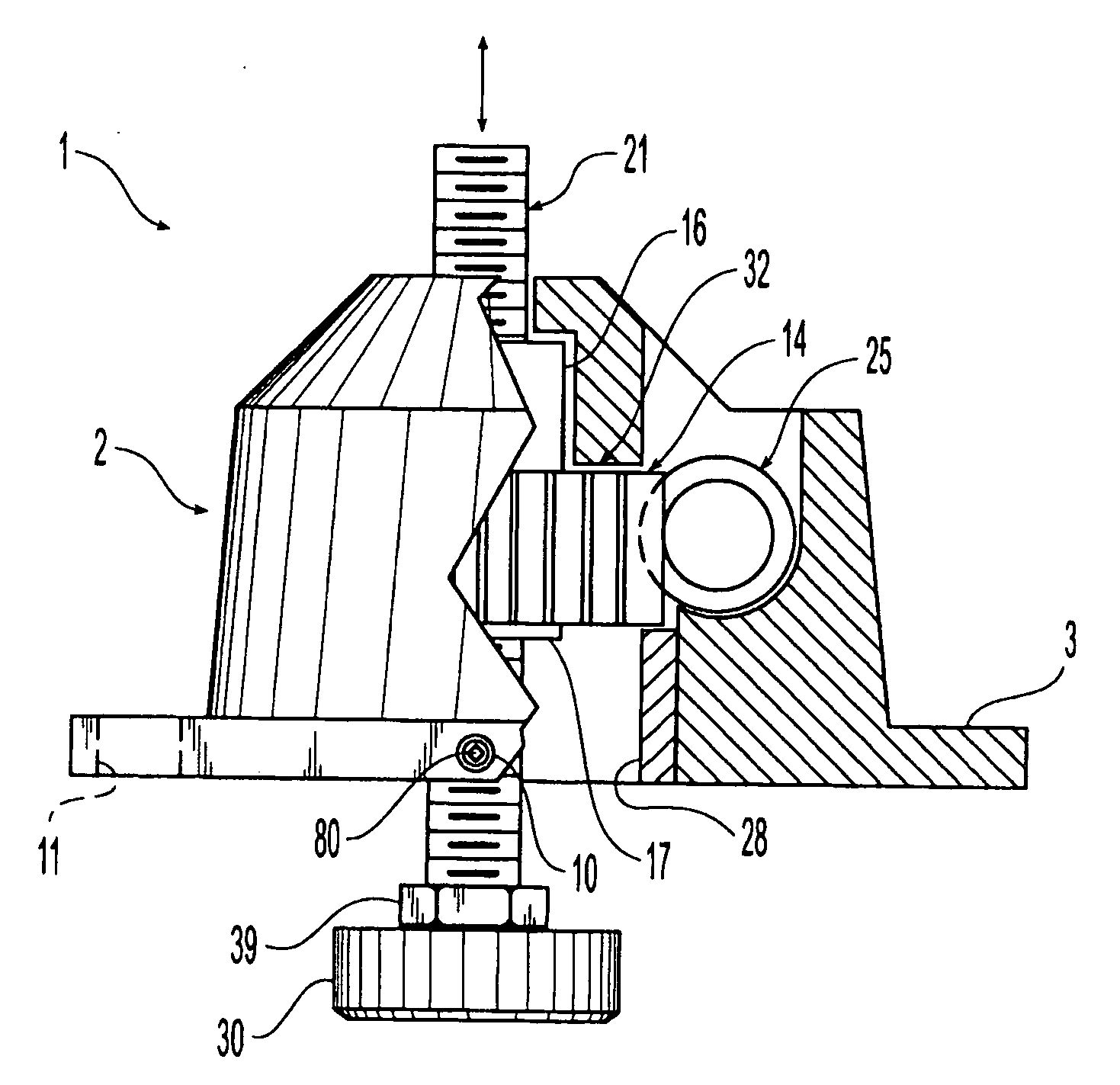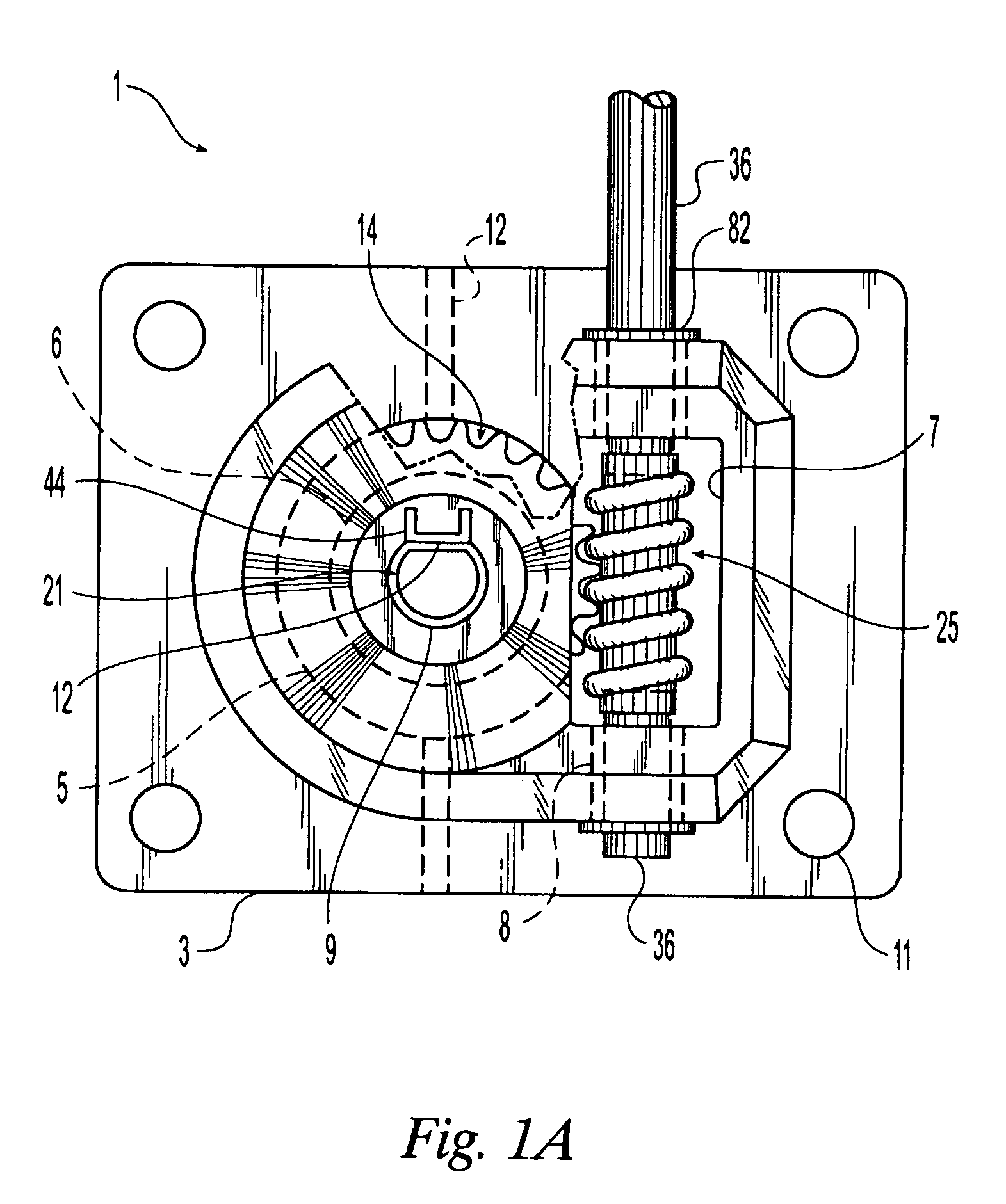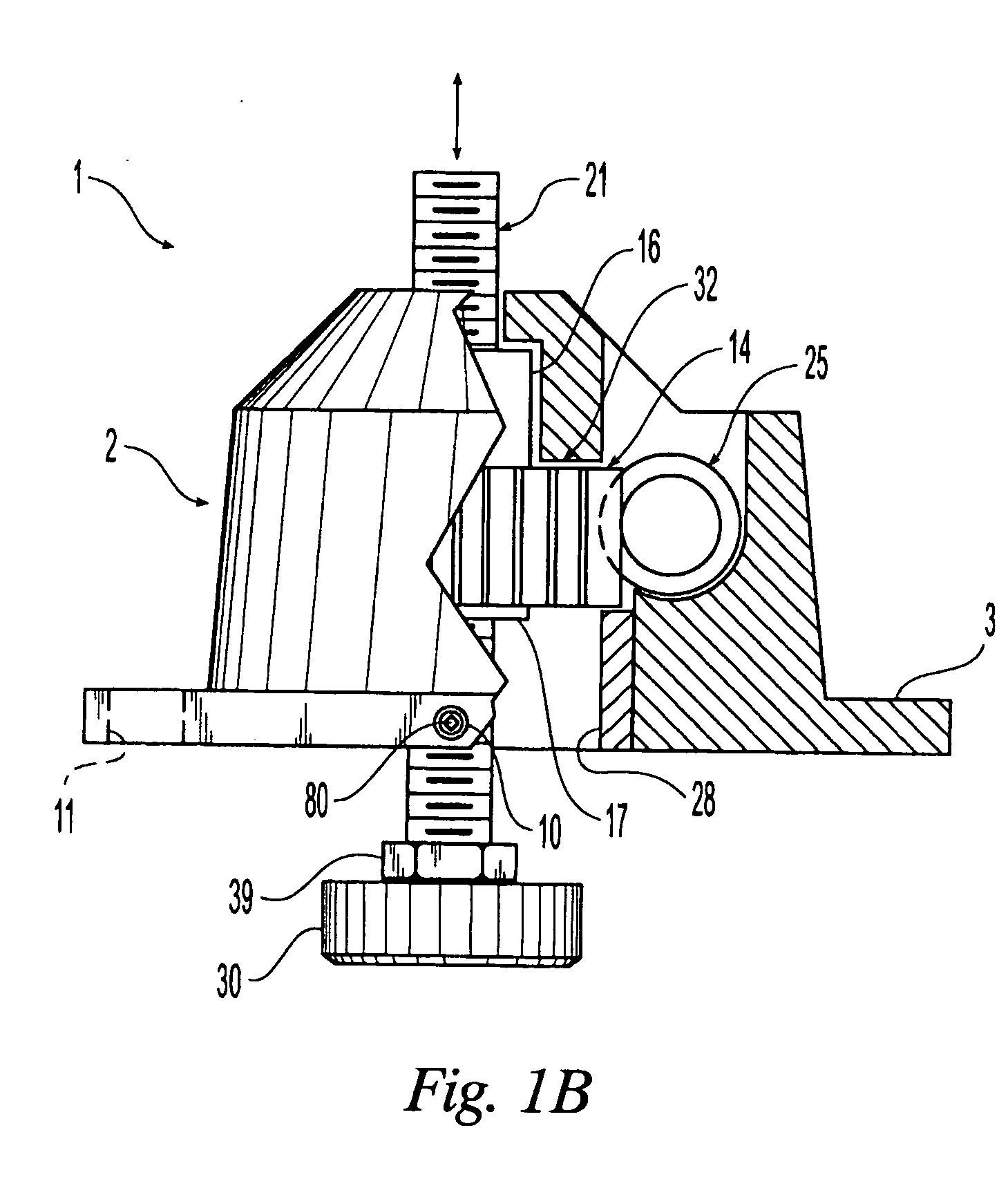The need to install and level objects on uneven or sloping floors has presented a long-standing problem, especially for various types of apparatuses including machines and appliances.
If all the legs do not contact the floor, many problems can develop.
For example, the outer cabinet and frame of an apparatus may become distorted over time due to nonuniform weight support, thereby impairing the proper operation of the apparatus.
In the case of a motorized apparatus such as a washing
machine, inadequate contact of all its legs with the floor is especially problematic because these devices have a tendency to vibrate and “walk” across the floor if the floor is not level.
Annoying “rocking” problems with an apparatus may also result where the legs do not all contact the floor.
Moreover, installations that are not level may be aesthetically undesirable by the inability to match the heights of adjacent cabinets, other equipment, or work surfaces.
Obviously, this technique has numerous drawbacks.
First, the apparatus must be manually lifted while such shims are placed under the legs, thereby often requiring more than one installer.
This situation also increases the
potential risk of back or other physical injuries to the installers.
Second, the shims are not permanently mounted to the apparatus legs and may shift over time or become completely dislodged.
This is especially problematic with motorized apparatuses which vibrate and “walk” as described above.
These manually adjustable supports, however, are still plagued by many of the problems encountered with the shim technique described above.
Furthermore, there is usually no way to access the rear legs for adjustment once the apparatus is slid into its final position because access is often not available from the rear or sides of the apparatus.
The manually adjustable leg design is also cumbersome to use, involving a
time consuming trial and error approach to leveling the apparatus on uneven floors.
Other approaches have been used with limited success in an attempt to overcome the many problems of leveling objects on uneven floors.
Although the rear supports are adjustable from the front of the appliance, the mechanism is complicated and requires virtually all parts to be fabricated from
metal.
Like many similar mechanisms, the manufacturing costs are high and they are prone to problems due to their complex design.
Although careful installers will typically not encounter problems, difficulties may occur if installers using power tools overtorque the leveling device by continuing to attempt to raise or lower the object to be leveled even after the vertical elevation shaft (described herein) of the leveling device has been either topped or bottomed out in its maximum range of vertical travel.
Despite the fact that significant resistance may encountered, some installers may continue to apply torque with the
power tool and damage the leveling device causing for example the plastic gears to seize and bind.
This renders the leveling device inoperative so that the appliance or object attached to the device can no longer be lowered or raised to achieve a level and plumb installation.
This situation results in delays and additional expense.
The over-torqueing problem often cannot be solved by mere
visual observation of the leveling device to determine if its full range of travel has been reached.
In other situations such as where leveling devices are installed on the rear of a kitchen appliance being placed against a wall, the rear of the appliance often cannot be observed by the installer once the appliance is positioned in it final location because of the presence of other appliances or cabinets on either side.
 Login to View More
Login to View More  Login to View More
Login to View More 


